Today the show floor opened adding to what was already a busy show here in Vancouver.
La Luna
The Making of La Luna
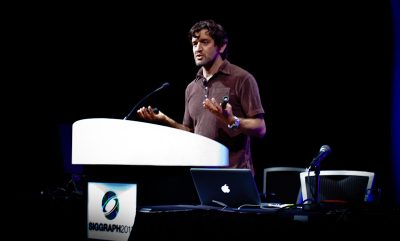 Pixar has a great recent tradition of presenting its short films at SIGGRAPH. This year saw director Enrico Casarosa discuss his film, La Luna, the story of a boy and two family generations who make a mysterious boat journey to the moon. This was a very personal story for the director who based the film on his own relationship with his father and grandfather growing up in Italy. Casarosa, originally a story artist, took us through the filmmaking process from storyboarding, visual development and art, through to animation and lighting.
Pixar has a great recent tradition of presenting its short films at SIGGRAPH. This year saw director Enrico Casarosa discuss his film, La Luna, the story of a boy and two family generations who make a mysterious boat journey to the moon. This was a very personal story for the director who based the film on his own relationship with his father and grandfather growing up in Italy. Casarosa, originally a story artist, took us through the filmmaking process from storyboarding, visual development and art, through to animation and lighting.
He said he sculpted the story by constantly telling it to friends, neighbors, partners and anyone who would listen. He then developed imageboards, almost children’s book version of the film in pencil and watercolor. An interesting aspect was then the three idea pitch to Pixar’s John Lasseter. The film features a unique form of ‘gibberish’ and recording this involved testing several voice actors – we saw some pretty funny voice recording sessions. In terms of visual development and art, Casarosa wanted to retain a textured look in the backgrounds and in the stars featured in the film. He told a story about how the characters’ beards reflected their brooms seen in the film and about shooting animators flicking socks with hockey sticks for broom reference. Other real reference of a row-boat in moonlight also was shot in a pond: “The moon was covered in clouds, it was freezing, the video we shot was crap, but it was great team building.”
 Reflections in the water retained a graphic feel, with pastels used for the backgrounds and the moon. Real texture reference, such as from weathered boats, was used for many objects in the film to give it a scratched and aged feel. For animation, Casarosa referenced Italian movies with plenty of gesticulation and even a Miyazaki film with a gravity defining moment. Lighting was aided with a color script and ‘luna light’. In some instances where lighting had been used to create textures, a slightly different approach of slightly blurring the image had to be taken with the stereo version of the film to deal with the small cheat.
Reflections in the water retained a graphic feel, with pastels used for the backgrounds and the moon. Real texture reference, such as from weathered boats, was used for many objects in the film to give it a scratched and aged feel. For animation, Casarosa referenced Italian movies with plenty of gesticulation and even a Miyazaki film with a gravity defining moment. Lighting was aided with a color script and ‘luna light’. In some instances where lighting had been used to create textures, a slightly different approach of slightly blurring the image had to be taken with the stereo version of the film to deal with the small cheat.
We were lucky enough to record an interview with Casarosa and producer Kevin Reher after the presentation – look out for that in an upcoming fxguidetv episode.
RenderMan
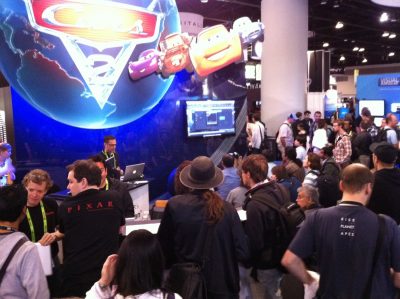 Pixar Animation Studios today also announced RenderMan for Maya 5.0, featuring the latest technologies from RenderMan Pro Server 16.0, and it is scheduled for release in later this year. RenderMan for Maya 5.0 showcases fundamental advancements in RenderMan’s ray tracing technology, including a new ray tracing hider, a radiosity cache, and physically plausible shading.
Pixar Animation Studios today also announced RenderMan for Maya 5.0, featuring the latest technologies from RenderMan Pro Server 16.0, and it is scheduled for release in later this year. RenderMan for Maya 5.0 showcases fundamental advancements in RenderMan’s ray tracing technology, including a new ray tracing hider, a radiosity cache, and physically plausible shading.
Additionally, the process of shading and lighting has been dramatically accelerated with new lighting tools, including the robust re-rendering technology used in Toy Story 3 and Cars 2, as well as progressive ray-traced re-rendering for real time look development.
One key new addiiton is full color and opacity “Deep Compositing”. The technique of Deep Compositing was discussed last year in fxguidetv. The new technique was recently used extensively by WETA in Rise of the Planet of the Apes, but without the full breath of implementation now possible in Renderman.
RenderMan for Maya 5.0 is priced at just US $995.
Alembic Launch
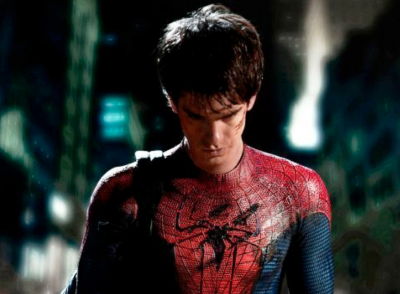 •Alembic 1.0 is released and is in production at Industrial Light and Magic/LucasFilm (ILM) and Sony Pictures Imageworks (SPI), on such productions as The Avengers, Men in Black 3 and The Amazing Spiderman.
•Alembic 1.0 is released and is in production at Industrial Light and Magic/LucasFilm (ILM) and Sony Pictures Imageworks (SPI), on such productions as The Avengers, Men in Black 3 and The Amazing Spiderman.
• The file format allows for much greater standardization for production, reduced files size, non-linear access and a universal baked geometry format that is both flexible and production tested.
• Developed to be open source, by a joint initiative from both ILM and SPI, and is in the great tradition of OpenEXR. It is production ready, able to be used commercially but hopefully widely supported allowing for greater collaboration between facilities.
• Alembic can stream real production scenes at full geometric resolution into Maya at for example 10.0 FPS from disk on a laptop, as was shown today at the press launch.
• The new format has the full support of Autodesk, the Foundry, Luxology, Houdini and others.
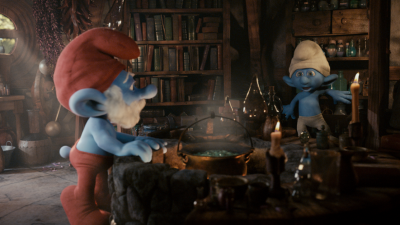 • The new data de-duplication can reduce file space on average by 48%, Rob Bredow offered an example from the recent SPI film Smurfs. An average shot on Smurf’s sees a disk space savings of 32% inside SPI. But if one compares Alembic to FBX the results are starling: In this case, Alembic saves 99.8% disk space as compared to Obj on the same 9 sec clip. That means the write time is reduced from 95 mins to just 3.5 mins. The readtime is reduced from65sec to 0.2 of a second.
• The new data de-duplication can reduce file space on average by 48%, Rob Bredow offered an example from the recent SPI film Smurfs. An average shot on Smurf’s sees a disk space savings of 32% inside SPI. But if one compares Alembic to FBX the results are starling: In this case, Alembic saves 99.8% disk space as compared to Obj on the same 9 sec clip. That means the write time is reduced from 95 mins to just 3.5 mins. The readtime is reduced from65sec to 0.2 of a second.
• Tommy Burnette, Head of Global Pipeline at Lucasfilm commented that ILM had found the same results. A 100 frame shot of Optimus Prime leaning down to talk to a human, with 2 samples per frame (for motion blur) and almost entirely non-deforming geometry, – in Alembic was is less than 2% the size of ILM’s own PBC format.
Optimus Prime
Alembic: 232,914,616 (232 MB)
PBC: 17,072,916,990 (17 GB, that is 73 x Alembic or Alembic is just 1.4% of the size)
OBJ (compressed): 15,113,365,600 (15 GB, or 65 x Alembic)
OBJ (uncompressed): 57,073,701,800 (57 GB, or 245 x Alembic)
• The team showed reference implementations (ie non-final but working implementations) of
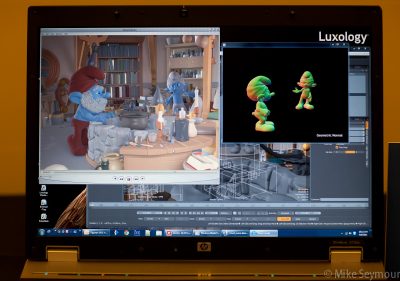 – Maya Import/Export
– Maya Import/Export
– Houdini Import
– Renderman Procedural
– Arnold Procedural
– Katana Procedural
+ Nvidia and other companies are actively working with the Alembic spec.
You can download the 1.0 code today for the library, and thus immediately see Alembic in your “Open” and “Save As…” menus.
More details below:
http://alembic.io/
http://code.google.com/p/alembic/
Bird of a feather: OpenColorIO
 OpenColorIO (OCIO) is a new open source project from Sony Pictures Imageworks (SPI), which they hope will soon be widely adopted across the Industry. SPI – it must be said, especially since Rod Bredow took the role of CTO, – has excelled at meeting the open source community head on and spearheading along with ILM (and their OpenEXR work) – some of the most impressive displays of industry co-operation we have seen in years, if not decades.
OpenColorIO (OCIO) is a new open source project from Sony Pictures Imageworks (SPI), which they hope will soon be widely adopted across the Industry. SPI – it must be said, especially since Rod Bredow took the role of CTO, – has excelled at meeting the open source community head on and spearheading along with ILM (and their OpenEXR work) – some of the most impressive displays of industry co-operation we have seen in years, if not decades.
Based on development started in 2003, OCIO enables color transforms and image display to be handled in a consistent manner across multiple graphics applications. Unlike other color management solutions, OCIO is geared towards motion-picture post production, with an emphasis on visual effects and animation color pipelines. Today there was a small but powerful group of colour science experts such as Charles Poynton, and expert users, as well as manufacturers such as the Foundry all gathered to discuss and listen to the latest advances in the 0.8 project from lead developer and advocate Jeremy Selan, Imaging Supervisor from Sony Imageworks.
OpenColorIO at the moment needs to be downloaded from the OpenColorIO.org but soon it will appear in all the Foundry products as standard such as Nuke 6.3 v3. OpenColorIO supports a wide range of color management approaches and pipelines including the new ACES IIF Academy standard.
The Exhibition Floor
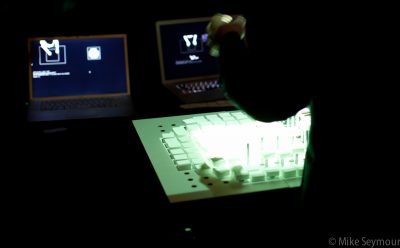 Today we squeezed in some time to check out the Exhibition floor of the conference. Of course, many of the big players are here: Autodesk, NVIDIA, NewTek, Intel, Maxon, Pixar, AMD and a host of other hardware and software and service providers. There was also a strong showing on the floor of visual effects companies, including MPC, Digital Domain and Prime Focus, which have presences in Vancouver and are also recruiting from their booths (there’s also a Job Fair at SIGGRAPH 2011). Many of the companies are giving film, VFX and animation presentations directly from their booths during the exhibition – check out the NVIDIA, Pixar, MPC and Digital Domain booths in particular.
Today we squeezed in some time to check out the Exhibition floor of the conference. Of course, many of the big players are here: Autodesk, NVIDIA, NewTek, Intel, Maxon, Pixar, AMD and a host of other hardware and software and service providers. There was also a strong showing on the floor of visual effects companies, including MPC, Digital Domain and Prime Focus, which have presences in Vancouver and are also recruiting from their booths (there’s also a Job Fair at SIGGRAPH 2011). Many of the companies are giving film, VFX and animation presentations directly from their booths during the exhibition – check out the NVIDIA, Pixar, MPC and Digital Domain booths in particular.
Covering the latest tech
We try and see as many presentations as we can at SIGGRAPH, but we’re also here talking to companies about the latest industry developments. Today we recorded a number of video interviews with companies like Thinkboxx on its Krakatoa tools, Vicon which announced its mobile mocap tech, and with artists from Weta and Imageworks on their latest technology development. Keep an eye out for these and others soon on fxguidetv, as fxpodcasts or articles on the site.

Thank you! Great Updates…..:)